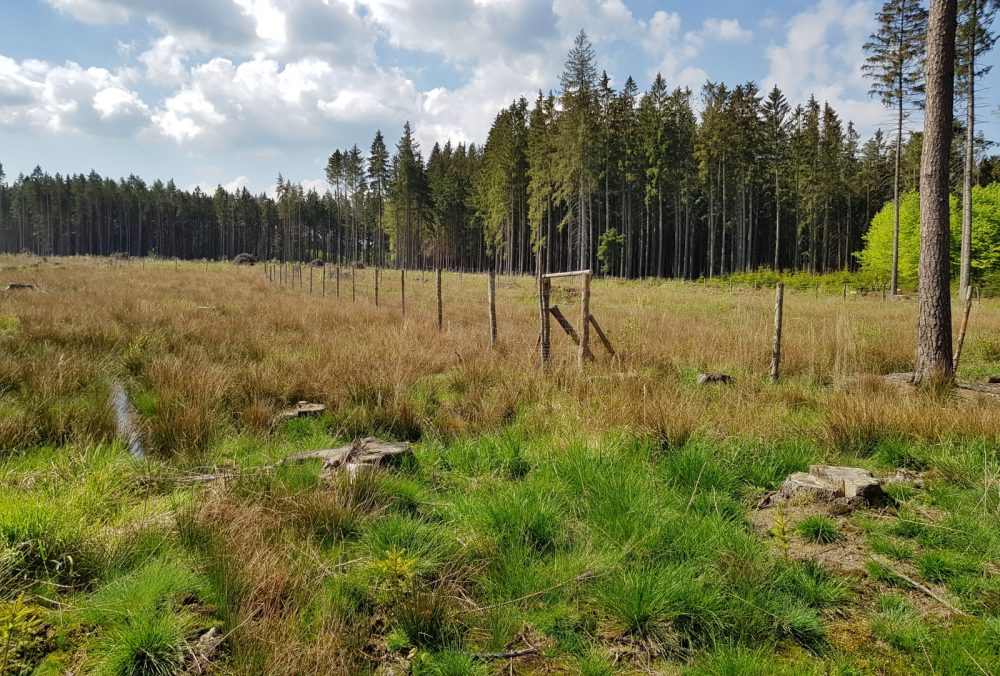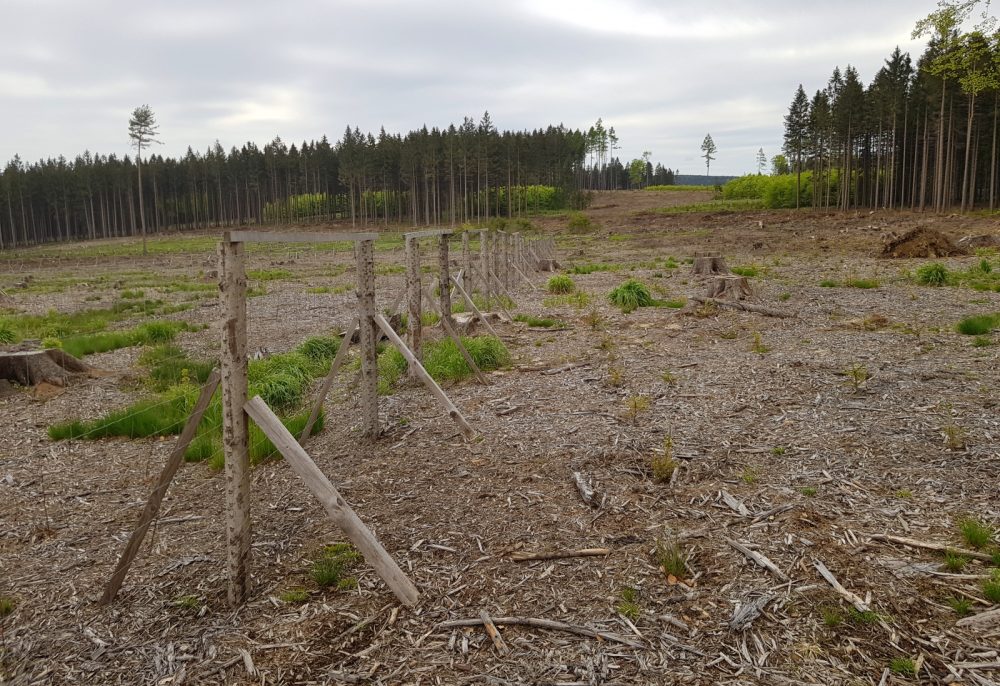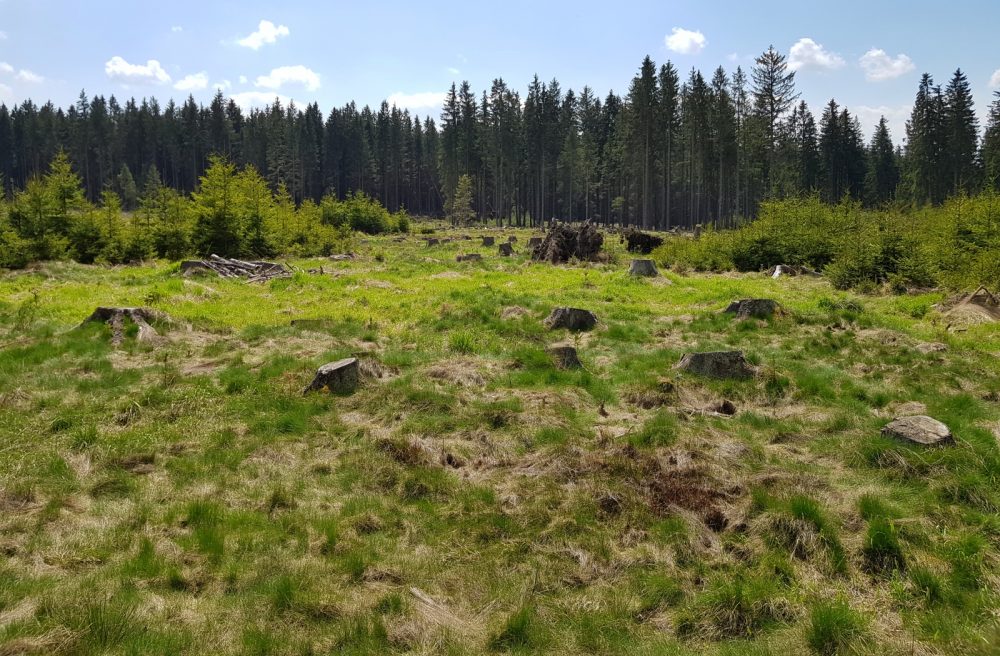Let us try to establish new forests by other way!

The extreme drought in recent years and the associated mass outbreak of bark beetles has led to a dramatic increase in salvage cutting and the creation of extensive clearings. Thus, the Czech forestry has found itself in an unprecedented situation, where it is necessary to establish new forest stands on a large area being resistant enough to anticipated climate changes and at the same time fulfilling all ecosystem and economic functions. The procedures used so far are difficult to apply under these circumstances.
 The total extent of clearings is giving the fundamental question to foresters whether to choose the traditional one-phase procedure of artificial and natural forest regeneration with a relatively high risk of problems with their further development and stability, or to use “new” methods in extended scale. The results of forestry research from recent years clearly recommend the second alternative. However, alternative procedures based on the use of a wide range of wood species and the choice of multi-phase forest regeneration does it mean increased demands on the precise successive steps planning, including actual implementation of the proposed measures.
The total extent of clearings is giving the fundamental question to foresters whether to choose the traditional one-phase procedure of artificial and natural forest regeneration with a relatively high risk of problems with their further development and stability, or to use “new” methods in extended scale. The results of forestry research from recent years clearly recommend the second alternative. However, alternative procedures based on the use of a wide range of wood species and the choice of multi-phase forest regeneration does it mean increased demands on the precise successive steps planning, including actual implementation of the proposed measures.
It was reason why scientists from the FGMRI have prepared and started implementing a project of an exemplary method of forest restoration after a disaster “Implementation of innovative forest restoration procedures on disaster clearings with regard to the support of biodiversity and increasing the functionality of forest ecosystems”, in cooperation with the Příbyslav Forest Cooperative (LDO).
The project will propose specific methods of forest regeneration according site conditions and potential for natural regeneration of economically important tree species (existence of natural regeneration, presence of mother trees). The initial parameters of biodiversity within the tree layer and ground vegetation, selected groups of invertebrates, birds and soil fungi will be assessed. Total soil carbon reserves will also be determined as an important parameter of its sequestration and the basis of soil biodiversity. Also, information on the presence of particularly protected, endangered or rare species, it will be an important output, too.
When designing a specific procedure, scientists will apply an individual approach to each locality with maximum consideration of its natural potential and the presence of protected species. The selection of differentiated restoration procedures will ensure the diversity and stability of the emerging forest stands.
 Measures to support biodiversity will include a combination of natural regeneration and artificial afforestation to achieve more diverse species mixtures, an utilization of two-phase regeneration to ensure the species, age and spatial diversity of forest stands, leaving part of the wood (logging residues and whole trunks) in the forest for spontaneous settlement by other organisms, selection and the retention of habitat trees and determining their further management.
Measures to support biodiversity will include a combination of natural regeneration and artificial afforestation to achieve more diverse species mixtures, an utilization of two-phase regeneration to ensure the species, age and spatial diversity of forest stands, leaving part of the wood (logging residues and whole trunks) in the forest for spontaneous settlement by other organisms, selection and the retention of habitat trees and determining their further management.
In designing these measures, scientists will support the retention functions of the forest and the care of natural wetlands. In addition to the design of regeneration procedures on cleared sites, the project will also include a proposal for the establishment of advanced regeneration elements (gaps) in subsequent spruce monocultures in the high forest stage, whose existence is threatened acutely not only by the further spread of bark beetles, but also by abiotic factors, especially by wind.
The project is implemented on forest property of the Příbyslav Forest Cooperative (LDO), which is located in the area of the Bohemian-Moravian Highlands (Vysočina Region) affected by the large-scale decay of spruce stands due to the gradation of bark beetles in recent years.
The clearings selected for regeneration are located in the forests of Račín and Nové Veselí. Forest District Račín is located on the territory of the Žďárské vrchy protected area, which is also a protected area of natural water accumulation. In the vicinity of localities of interest, there is a number of localities of European importance (EVL). In the Račín Forest District, these are EVL Ransko, Ranská jezírka, peatlands Dářská or Pod kamenným vrchem. In the Nové Veselí Forest District, there are present as EVL objects e.g. localities Hodíškovský rybník or Znětínské rybníky.
 The implementation of the project will contribute to the completion of the National Action Plan for adaptation to climate change. The project will also enable the direct transfer of research results into practice. As part of the project, there will be realized professional training and practical instruction for the Forest Cooperative’s workers, who will thus have direct access to current research findings in the field of alternative management procedures for large-scale clearings.
The implementation of the project will contribute to the completion of the National Action Plan for adaptation to climate change. The project will also enable the direct transfer of research results into practice. As part of the project, there will be realized professional training and practical instruction for the Forest Cooperative’s workers, who will thus have direct access to current research findings in the field of alternative management procedures for large-scale clearings.
Příbyslav Forest Cooperative (LDO) manages forest property with an area of 5,800 ha, in addition to providing expert management of municipal forests and forests of small owners. It will therefore be possible to aim the transfer of know-how to these groups of owners. Thanks to the involvement of the LDO in the project, there will be created an example of good practice in the management of disaster clearings in the region.
Clearing areas restored in this way can also be used in the future as demonstration objects with examples of “new approaches” to the restoration of calamitous clearings with the aim of not only restoring the forest environment, but also representing a way of increasing biodiversity and increasing the potential stability of newly emerging forest stands. It will be possible to use these localities for excursions as part of professional seminars, practical training at secondary and higher forestry schools and scientific conferences.
The project realization is supported both by Norwegian Funds and State Environmental Fund of the Czech Republic.
Prepared by Ing. Jan Řezáč, FGMRI, e-mail: rezac@vulhm.cz
Illustration photo: calamitous clearings, where a new forest will be created, in frame of project realization, LDO Příbyslav, author Monika Vejpustková
